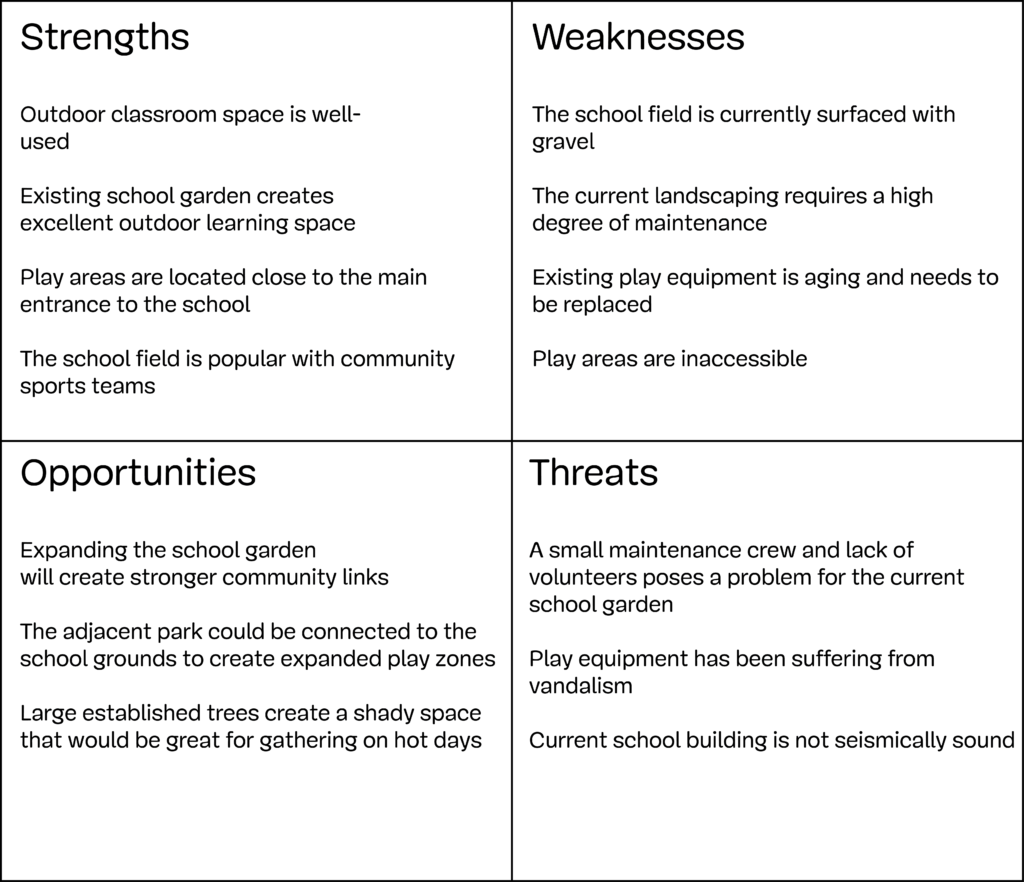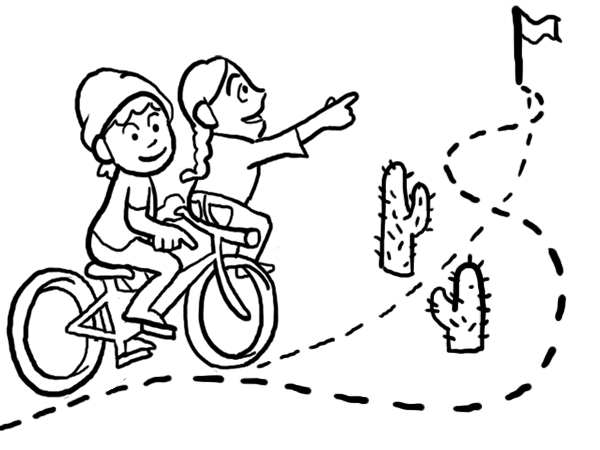How long will it take?
It is important to understand that creating a new outdoor learning or play environment will not happen quickly. Grants may only be awarded once annually, and the design and approval process take time. Make sure you have a handle on when the deadlines for submissions are for your respective school board or school authority. Understand that it may take up to two years to see your project dreams become a reality.
Creating a Vision
This is a critical step that will help you create a strong vision for the project moving forward. In terms of goal setting, it is a good idea to create two sets of goals – those that must be achieved with this project, and those “dream” goals that your team will work to achieve if additional funding can be found and constraints mitigated.
In terms of goal setting, you will want to consider critical elements such as accessibility. Is your goal to make a portion of the play environment accessible, or as much of it as possible? Are you planning to redesign play spaces for all ages, or just for a specific age group, such as students in preschool or kindergarten? Spend some time developing and editing this list so it encompasses everything you hope to achieve.
Constraints may include access to funding, specific physical attributes of the school site (such as a treasured tree that must remain intact), or aspects of the local building code that must be taken into account. Once you have created a list of constraints, make sure that these do not contradict any of your stated goals, and that this document can help to shape the project going forward.
Example
Goal: Make all play spaces accessible
Constraint: Current pea gravel surfacing cannot be navigated by students, teachers, and community members in wheelchairs
Design implications moving forward: In addition to play equipment, pea gravel surfacing must be replaced by a material that accommodates wheelchair traffic
SWOT
Another way of thinking about opportunities and constraints is to do a SWOT analysis, which is a strategic planning tool. SWOT stands for Strengths, Weaknesses, Opportunities, and Constraints.
- Strengths are things that are done well, advantages, and relevant resources – in other words, what is working on your site?
- Weaknesses are things that can be improved, are done poorly or not at all – what is not working on your site?
- Opportunities are things that can be expanded, or built upon – what aspects of the site could be maximized or enhanced?
- Threats are obstacles to growth or improvement – what challenges do you face with this site?
Below you will find an example of what a completed matrix might look like for a schoolyard project. You can download your own SWOT analysis worksheet here.

